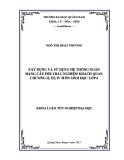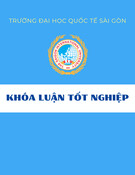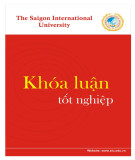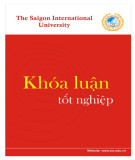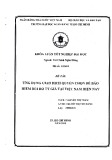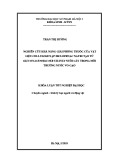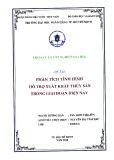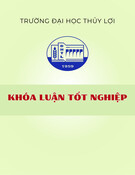
ABSTRACT
Commercial banks play an important role in the economy, society and deepening
of each person's life the life of each person. It is not only a place for people to
deposit money, save money, borrow capital when needed to produce business, but
also provide financial support to customers when they need to buy houses, buy cars
to service and improve the quality of life, help them to have financial resources for
study abroad or invest. Especially in the modern industrialization era, when the
economy is expanded and developed, the speed of human life is faster, the services
and products of the bank need to be changed and replaced to meet all the needs of
client. With the advancement of technology and science technology, banks are
gradually developing, bringing the most convenience to customers. Customers do
not need to go to a bank or a bank branch when they want to make transactions such
as money transfer, bill payment anymore, but just through the application on the
phone can be to do so easily. It is also because the banking products and services
are more and more convenient, so the risks associated with it are also increasing.
Commercial banks are always in the strict control of the law and the state to ensure
the operation of the Bank safe and effective. As this is a money-based business and
a place to hold people's money, the more operational risk management is concerned.
Bank risk can come from a number of factors such as unusual changes in policies,
natural disasters, storms and floods, due to the unstable economy; loose legal
environment, lack of synchronization; political and social changes at domestic and
foreign; the fluctuation of the economy, ... Or the risk may come from within the
bank itself such as loose credit policy, the staff do not comply with regulations, the
department is not effective, ethics bad employee, internal control is not tight; ... or
may also be from the customer that the bank is serving such as poor business
ability, ability to organize business production of the leadership is limited;
customers use the wrong capital’s purpose; clients are not willing to repay,... Risk
can come from many sides and cannot be avoided. In the Bank's activities, credit
activities are considered as an important area, bringing the main profit, affecting the






